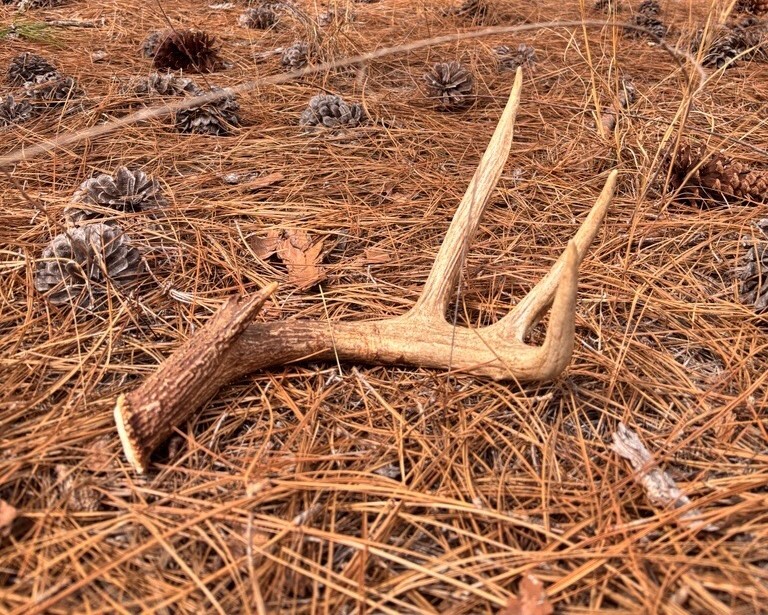AFM NEWS
Antler Shedding: A Deep Dive

By Emily Belser
Man has long been fascinated with antlers. They’ve been used as tools, in medicine, and in religious ceremonies for thousands of years. Today, white-tailed deer hunters spend close to $25 billion annually in North America alone in pursuit of antlers. Collections adorn hunters’ walls, serving as a reminder of hunts past. As spring approaches, shed hunting is now on many hunters' minds.
Let’s dive a little bit deeper. Antlers are grown and shed annually from the pedicle, or base, of the antler. More specifically, osteoclasts around the pedicle become active over a two-week period as the bone at the abscission layer (where the antler meets the pedicle) becomes de-mineralized. Eventually, the weight of the antler causes it to fall off as that abscission layer becomes weakened. The pedicle is now an open wound. This is the point where cranial/brain abscesses may originate, as bacteria are able to invade the open wound. The pedicle will heal over in as little as 10 days, after which antler growth immediately begins again.
Despite what you may have heard, antler shedding and growth are not controlled by the weather. Rather, those processes are driven by hormones, which are primarily influenced by photoperiod, or the amount of sunlight per day, that reaches the pineal gland. In 1954, a Polish scientist by the name of Z. Jaczewski was the first to demonstrate this phenomenon. In early spring, at the start of antler growth, he shut red deer in a darkened shed from 4:00 pm to 8:00 am every day, mimicking the onset of winter for the area. Antlers quickly stopped growing, and velvet was shed before early summer. However, the bucks became so ornery that the researchers allowed them to remain outside and thus were exposed to normal summer day lengths. This caused them to prematurely shed their stunted antlers and immediately began growing their second set of antlers within the same calendar year.
Although photoperiod largely affects the hormone levels that drive the antler cycle, other factors can influence those same hormones. Poor body condition and high-stress levels due to factors such as poor nutrition and overpopulation can cause deer to cast antlers sooner, particularly in older, less healthy deer. Alternatively, a skewed sex ratio that leads to an extended breeding period may cause mature bucks to maintain high levels of testosterone and, therefore, retain antlers for a longer period of time. Of course, there will always be a few outliers, but if you notice a significant number of animals losing antlers early or retaining them later, you may want to take a hard look at the population dynamics and nutrition factors on your property.
Some well-intentioned people will create antler “traps” or “cages” that are meant to attract deer and then “assist” deer in the antler casting process and make antler collecting easier. I would strongly advise against these traps. If the antler is not completely ready to be cast, forcing it to fall could cause injuries to the pedicle, which could ultimately lead to undesired, abnormal antler growth. Instead, focus on finding sheds already lying on the ground in your food plots, in the roads, or maybe in some recently burned areas. Spring is a great time to get outside and look for sheds, maybe even with friends and family. Lastly, my hope for you this shed hunting season is that you find plenty of big sheds – and that they won’t be found with your truck tires.
